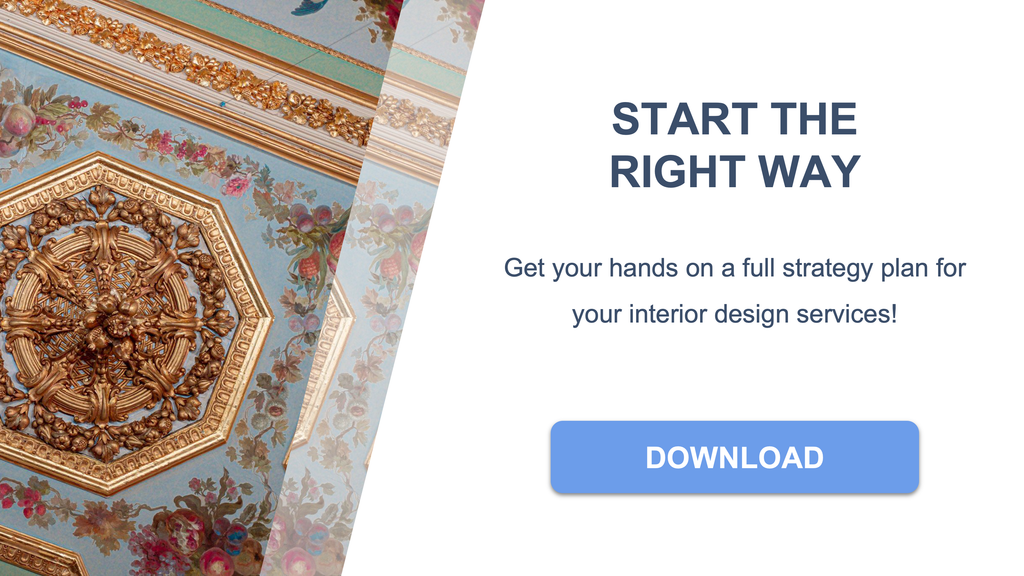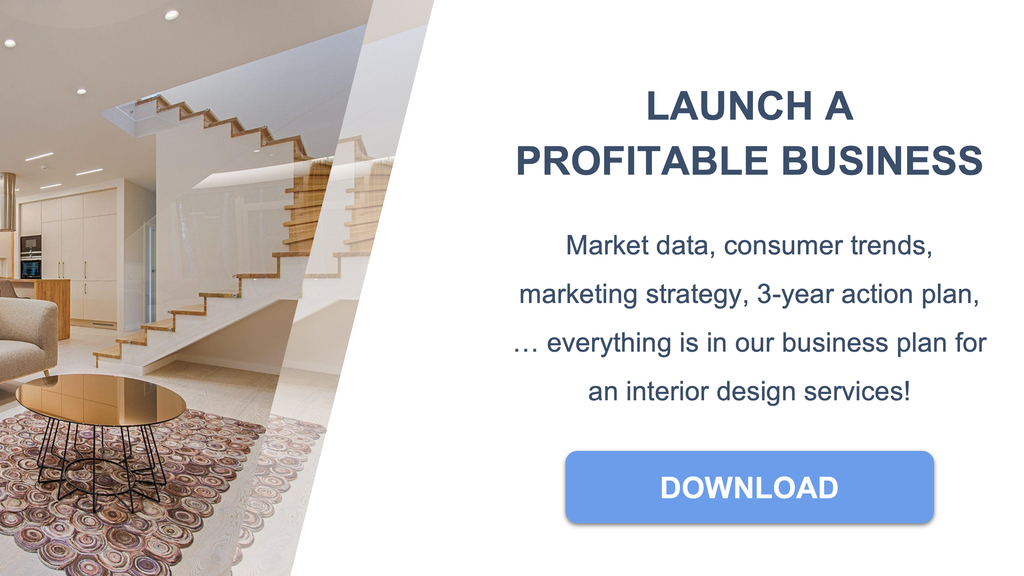This article provides detailed insights into the profitability of an interior design business. Whether you're starting out or planning to scale your practice, understanding revenue streams, cost structures, and profit margins is essential for success in this industry.

Our interior designer business plan will help you build a profitable project
Starting an interior design business requires clarity on revenue and profit margins. This article breaks down key questions about profitability, from typical project earnings to how costs are structured. You'll find detailed market insights in our interior designer business plan, updated every quarter.
Understanding how to generate revenue and maintain a healthy profit margin is critical. Below is a detailed breakdown of typical costs, fee structures, and strategies for success in the interior design industry.
| Category | Revenue Range | Cost Range |
|---|---|---|
| Residential Projects | $1,500–$5,000 per room | $2,000–$20,000 per room (furniture/materials) |
| Commercial Projects | Several multiples of residential projects | $500–$10,000+ per subcontractor per project |
| Freelance Designers | $5,000–$10,000/month | Variable based on location and project size |
| Established Firms | $25,000–$50,000/month | Office rent, software, marketing: $3,000–$10,000/month |
| Gross Margin (Services) | 35%–55% | Depends on overhead and project mix |
What is the typical revenue an interior designer generates per project, per month, and per year, and how does this vary between residential and commercial work?
Revenue for interior designers varies based on the scope of the project. Residential projects typically bring in between $1,500–$5,000 per room, while large-scale commercial projects can be worth several times more. Freelance designers can expect to earn around $5,000–$10,000 per month, while established firms may generate $25,000–$50,000 or more per month from larger projects.
The revenue varies significantly between residential and commercial work, with commercial projects generally yielding higher returns due to their scale. Residential designers focus on smaller, more frequent projects, while commercial designers work on fewer, larger contracts with higher budgets.
What are the most common fee structures in the industry—hourly, flat fee, cost-plus, or percentage of project—and what ranges in USD are usually applied?
Interior designers typically use one of several fee structures, including hourly, flat fee, cost-plus, and percentage of the project cost. Hourly rates range from $100 to $500 per hour, depending on expertise and market. Flat fees for smaller projects (like room design) can range from $2,000 to $12,000.
Other common structures include a percentage of the project cost (10%-20%) or a cost-plus model where designers mark up product costs by 10%–40%. Retainers are also used, with fees of $2,000 to $10,000 for large projects.
How much does an interior designer typically earn per unit of work, such as per consultation, per day of site work, or per room designed?
Interior designers can earn between $150 to $750 for a single consultation, depending on their experience and location. For site work, daily rates range from $400 to $1,200. When designing a room, the typical fee is between $2,000 to $5,000, depending on complexity and scope.
High-end designers may charge more for their time and expertise. Larger projects, like entire home renovations, bring in more revenue but require greater investment in time and resources.
What are the primary direct costs associated with interior design projects, such as furniture, materials, subcontractors, and logistics, and what are the usual ranges per unit, per project, and per month?
Direct costs in interior design projects include furniture, materials, subcontractor fees, and logistics. Furniture and materials can cost between $2,000 and $20,000 per room, with higher costs for luxury or commercial designs. Subcontractors such as electricians or painters may cost between $500 and $10,000+ per project, depending on complexity.
Logistics and transportation typically add $200–$600 per project for deliveries and installation. These direct costs make up 55–65% of a designer's total project revenue, depending on the pricing structure and project type.
What are the typical indirect or overhead costs, such as office rent, software subscriptions, marketing, insurance, and staff salaries, and what do these add up to on a monthly and annual basis?
Overhead costs for interior designers can range significantly based on the business's scale. Office rent is typically $1,000 to $5,000 per month, depending on location. Software subscriptions for design tools or project management software range from $100 to $500 per month.
Marketing costs typically range from $500 to $2,000 per month, while insurance (such as professional liability) costs between $50 and $200 per month. Staff salaries, including for designers and admin roles, may range from $45,000 to $70,000 annually for designers and $30,000 to $50,000 annually for administrative support.
What is the average gross margin on services alone (consulting, design plans, supervision), and how does this compare with margins on product sales like furniture, decor, or custom pieces?
The gross margin on services like consulting and design supervision typically ranges from 35% to 55%. Product margins, however, are generally lower, around 20% to 35% for furniture and decor. Custom pieces may allow for higher margins, often between 20% and 40%, but come with higher risk and complexity.
While services provide higher gross margins, product sales can help balance revenue streams, especially if a designer offers custom-designed furniture or high-end decor pieces.
What is the standard net profit margin in the industry once all expenses are deducted, and how does this translate into actual dollar amounts on projects of different sizes?
Net profit margins in the interior design industry typically range from 15% to 30%. On a $100,000 project, a 20% net profit margin would leave $20,000 in profit after all costs are accounted for. Smaller firms or solo designers often see net profits in the range of $2,000–$6,000 per month, while mid-sized firms may see $10,000–$20,000 per month in net profits.
Large studios, despite handling multimillion-dollar contracts, may see a lower net margin of 5%–15% due to higher overhead costs, but their absolute dollar profits increase with scale.
How do profit margins differ between small-scale designers working independently, mid-sized firms with a small team, and large design studios handling high-value contracts?
Profit margins vary based on business scale. Solo designers typically enjoy higher gross margins of 40%–55%, with net profits around 20%–30%. Mid-sized firms with 3–10 staff members face slightly lower margins due to increased overhead but still maintain a gross margin of 35%–50% and net profits of 10%–20%.
Large studios may experience reduced profit margins (30%–45% gross, 5%–15% net) due to the complexities of managing large teams and high-value contracts. However, their absolute profits increase with higher revenue.
How exactly should a margin percentage be interpreted—for example, what does a 20% profit margin mean in terms of dollars earned on a $100,000 project?
A 20% profit margin means that for every $100,000 project, the designer would earn $20,000 after deducting all project-related and business expenses. Profit margins reflect how much of the revenue remains after covering costs, and interpreting margins accurately is crucial for financial planning and pricing strategies.
What are the most effective strategies interior designers use to improve profitability, such as negotiating supplier discounts, charging design retainers, or bundling services with products?
- Negotiate supplier/vendor discounts or use trade programs to improve margins on product purchases.
- Charge design retainers or phased payments to ensure consistent cash flow.
- Bundle services with product sales to create more comprehensive packages and increase total project value.
- Streamline project management to avoid cost overruns and scope creep.
- Invest in marketing to build a strong portfolio, which can attract high-value projects.
How do profit margins evolve as an interior design business scales, both in terms of higher revenue potential and the pressure of increased overhead?
As a business scales, revenue potential increases due to larger projects and more diverse service offerings. However, overhead costs (such as office space, salaries, and marketing) also rise, which can put downward pressure on profit margins. It's important for growing firms to manage these costs effectively while maintaining high-value services to preserve profitability.
How should an interior designer break down profitability by service line—such as design consulting, project management, product resale, and custom design—and what are the typical margin ranges for each?
Profitability can be broken down by service line, with design consulting and project management generally yielding the highest margins (50%–60%). Product resale tends to offer lower margins (20%–35%), while custom design pieces can offer higher margins (20%–40%), though they also involve more complexity and risk.
This is one of the strategies explained in our interior designer business plan.
Conclusion
This article is for informational purposes only and should not be considered financial advice. Readers are encouraged to consult with a qualified professional before making any investment decisions. We accept no liability for any actions taken based on the information provided.
Read more articles
- Interior Designer Business Plan
- Interior Designer Complete Guide
- Interior Designer Markup
- Interior Designer Pricing
- Home Decor Industry Statistics
- Is Interior Design Business Profitable?
- Is Interior Design Worth Pursuing?


